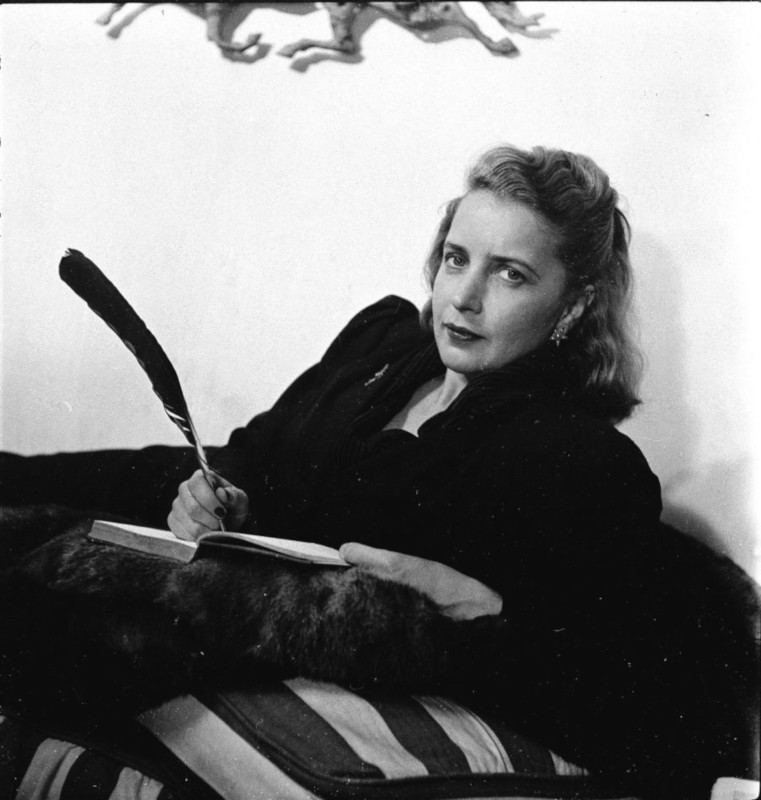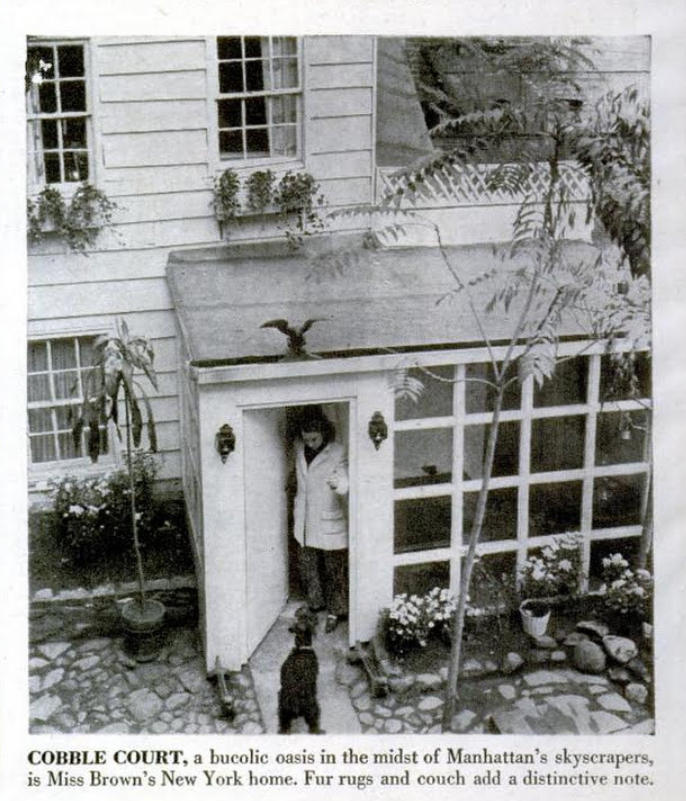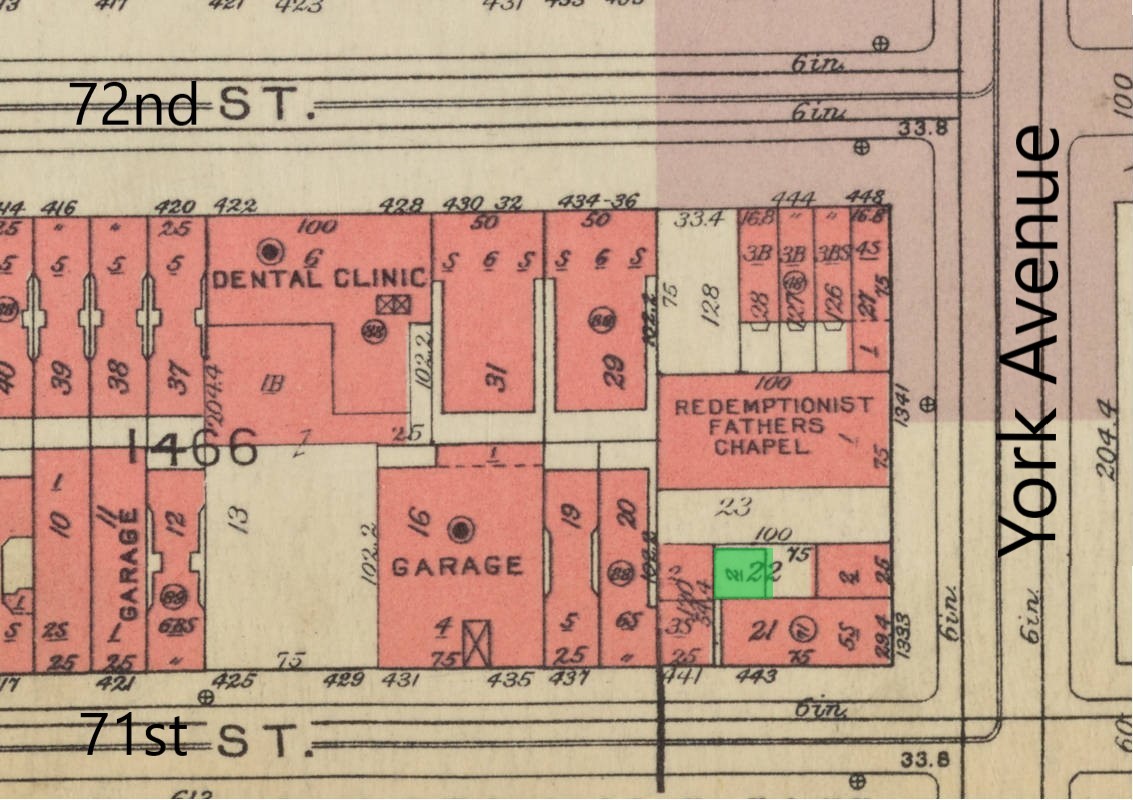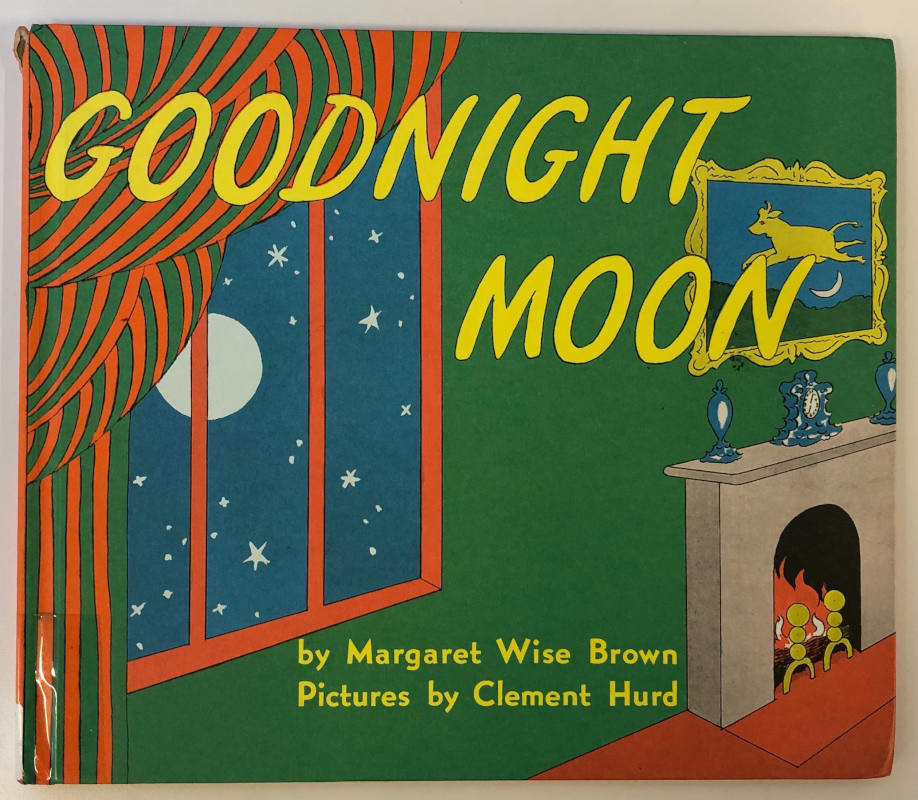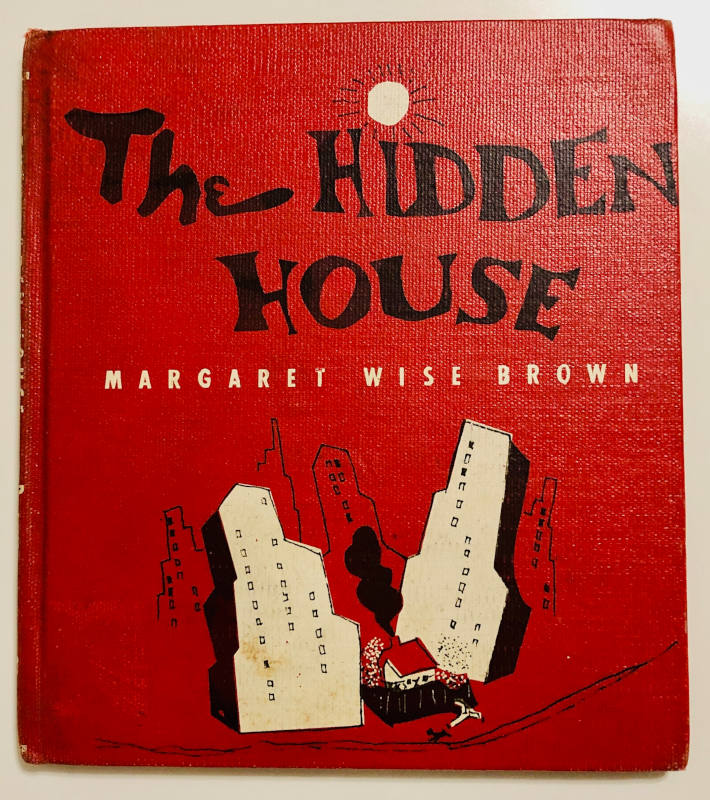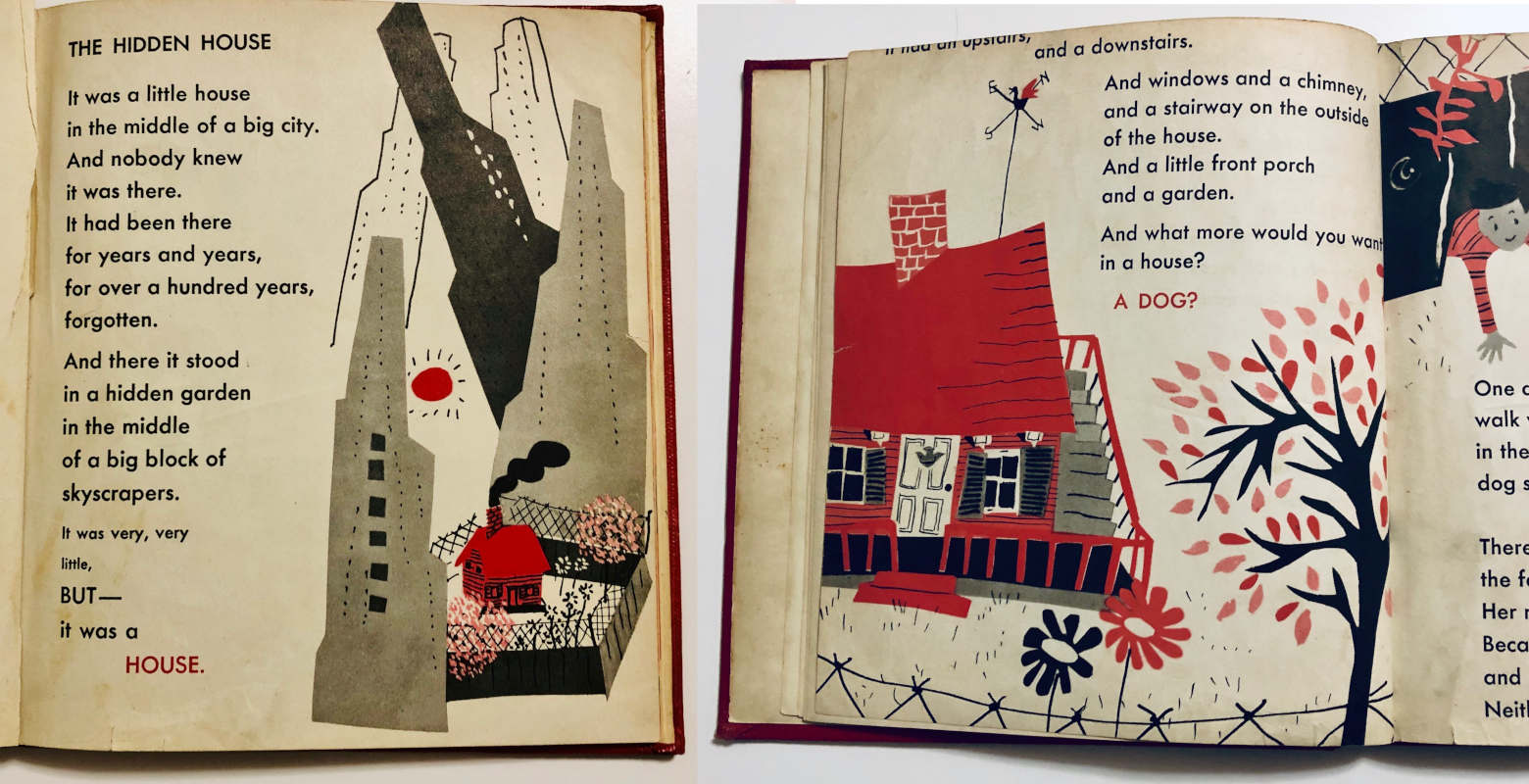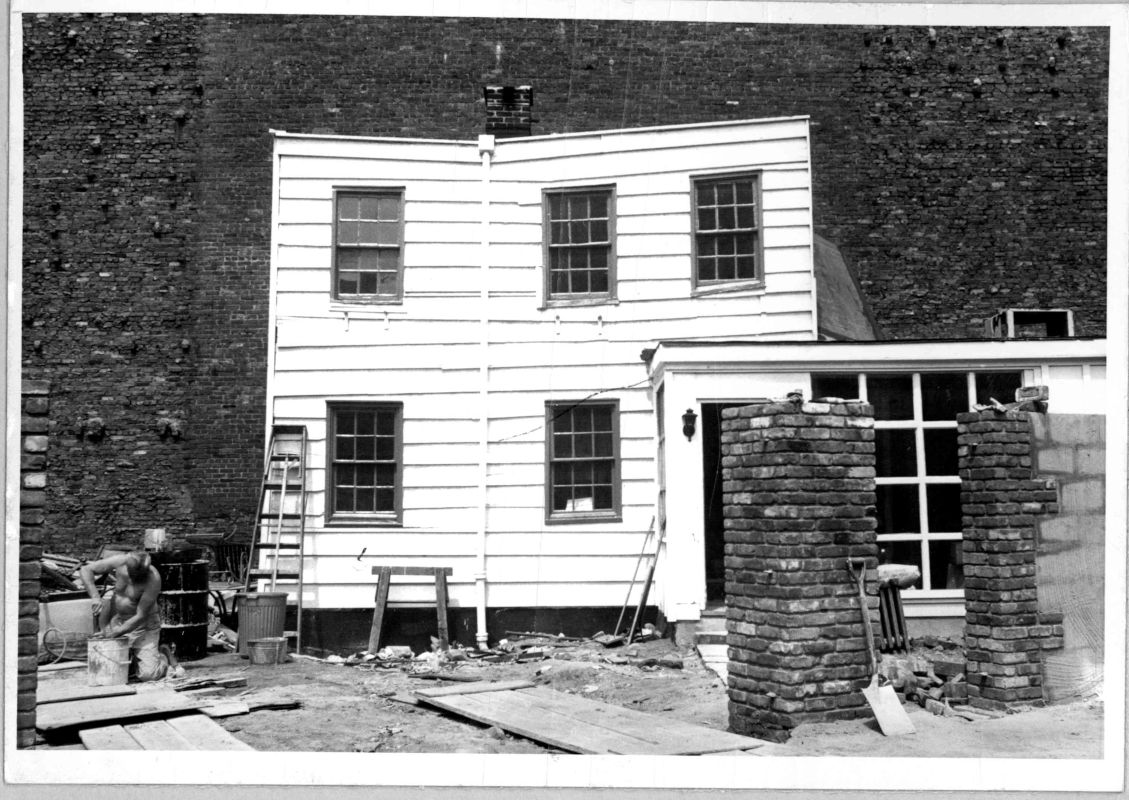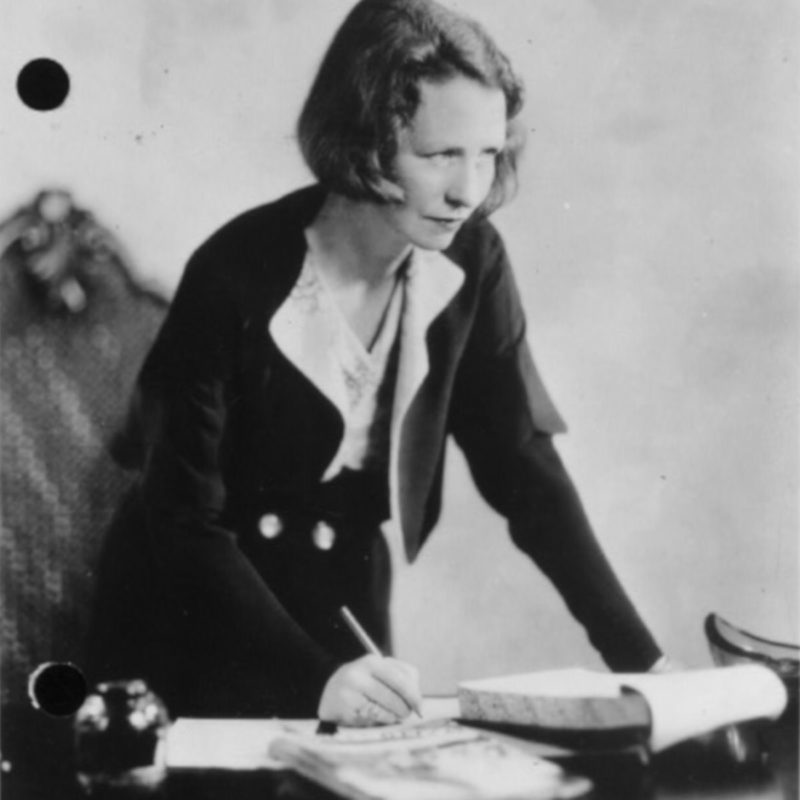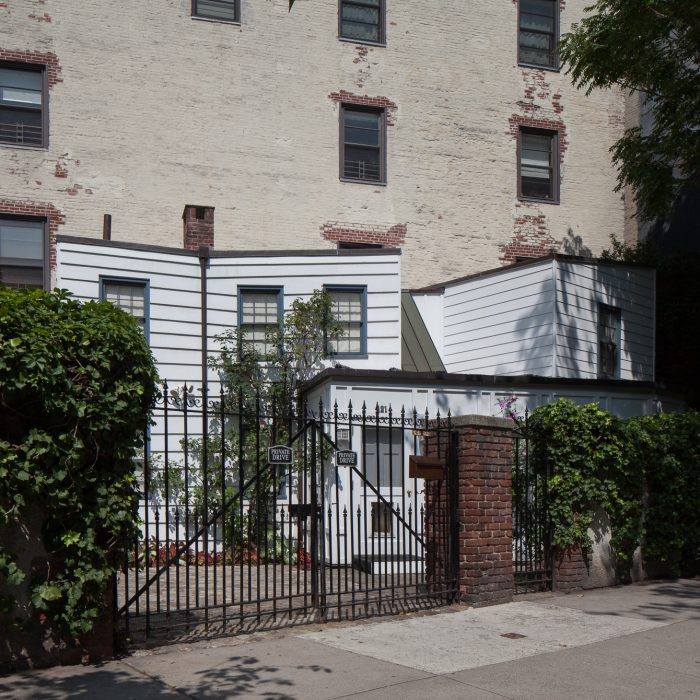
Margaret Wise Brown Writing Studio
also known as Cobble Court; before the house was moved to Charles Street in 1967, it was located at 1335 York Avenue on the Upper East Side
overview
From 1942 until her death in 1952, Margaret Wise Brown – the best-selling children’s book author of The Runaway Bunny, Goodnight Moon, and other stories – used this “Cobble Court” house (since enlarged) as her writing studio.
At the time, it was located at 1335 York Avenue, near the Upper East Side residence that she shared with her partner, socialite Blanche Oelrichs, who went by her pen name, Michael Strange.
History
Margaret Wise Brown (1910-1952), the prolific, best-selling author of children’s books, was born in her family’s house at 118 Milton Street in Greenpoint, Brooklyn, and grew up on Long Island. In the mid-1930s, through her progressive education training at the Bank Street School and the Little Red School House, in Greenwich Village, she honed her writing style and observed children’s perspectives and word use. Her first book, When the Wind Blew, was published in 1937. Brown is credited with popularizing the picture book and helping to reimagine children’s literature by centering stories on a child’s reality rather than on fairy tales.
In 1939, Brown met Blanche Oelrichs (1890-1950), an Upper East Side socialite who, since the early 1920s, went by her pen name, Michael Strange. Brown and Strange began a long-term, tumultuous relationship in 1942. After Strange’s third husband discovered the affair that same year, she left their 10 Gracie Square residence and moved to two apartments at 186 East End Avenue. One of the apartments became Brown’s primary city residence for the rest of the 1940s. Soon in need of a separate space to write, she rented a nearby c. 1810 farmhouse that was hidden behind a brick house at 1335 York Avenue, between East 71st and 72nd Streets. Lacking insulation and electricity, the quirky two-story, four-room wood house shared a cobblestone courtyard with the front building and was affectionately known as Cobble Court.
The majority of Brown’s more than 100 books were written during her ten-year tenancy of Cobble Court. Her most famous books, The Runaway Bunny (1942) and Goodnight Moon (1947), were edited by the pioneering Ursula Nordstrom of Harper & Brothers. Brown’s fame grew as the post-World War II baby boom led to an increased demand for children’s books, and hers in particular. Her whimsical Cobble Court writing studio became an integral part of her public image as a children’s book author. Life magazine took photos of her at her “bucolic oasis in the midst of Manhattan’s skyscrapers” for its December 2, 1946, issue and Good Housekeeping apparently likened the house to a fairy tale hideaway. Featured in The Hidden House (1953), its arched mantel was also recreated in Goodnight Moon.
It was a little house in the middle of a big city. And nobody knew it was there. It had been there for years and years, for over a hundred years, forgotten. And there it stood in a hidden garden in the middle of a big block of skyscrapers.
Brown’s relationship with Strange inspired several stories, including Don’t Frighten the Lion (1942), based on one of their encounters at the Central Park Zoo, and Robin’s House (1944), written in response to Strange’s depression over the suicide of her son, Robin Thomas. When Strange’s health declined in 1949, she became more religious and believed she would only recover if she ended their “sinful” relationship. Nevertheless, she made Brown her executor. Brown wrote The Dark Wood of the Golden Birds (1949) for her as she was dying and, after Strange’s death, the grieving author based Mister Dog (1951) on her life alone at Cobble Court.
Brown, who today might identify as bisexual, had relationships with men and was engaged to James Stillman Rockefeller, Jr. before she died. Her ashes were scattered at The Only House, her Maine residence. On March 5, 1967, facing demolition, the Cobble Court house was moved to its present-day lot at 121 Charles Street in Greenwich Village, and, in 2000, was expanded in size.
Entry by Amanda Davis, project manager (February 2019).
NOTE: Names above in bold indicate LGBT people.
Building Information
- Architect or Builder: Unknown; George Boyle (additions)
- Year Built: c. 1810; 2000 (additions)
Sources
“118 Milton Street: Birthplace of Margaret Wise Brown,” Brooklyn Public Library, bit.ly/2MtGauX.
Amanda Davis, “A History of 121 Charles Street,” Greenwich Village Society for Historic Preservation, November 13, 2014.
Amy Gary, In the Great Green Room: The Brilliant and Bold Life of Margaret Wise Brown (New York: Flatiron Books, 2017).
Billy Parrott, “Literary Landmarks in the Village: Goodnight Moon,” New York Public Library blog, October 2, 2008, on.nypl.org/2p0Zrrl.
Bruce Bliven, Jr., “Child’s Best Seller,” Life, December 2, 1946.
Leonard S. Marcus, Margaret Wise Brown: Awakened By the Moon (New York: HarperCollins Publishers, 1999).
Do you have more information about this site?
This project is enriched by your participation! Do you have your own images of this site? Or a story to share? Would you like to suggest a different historic site?
